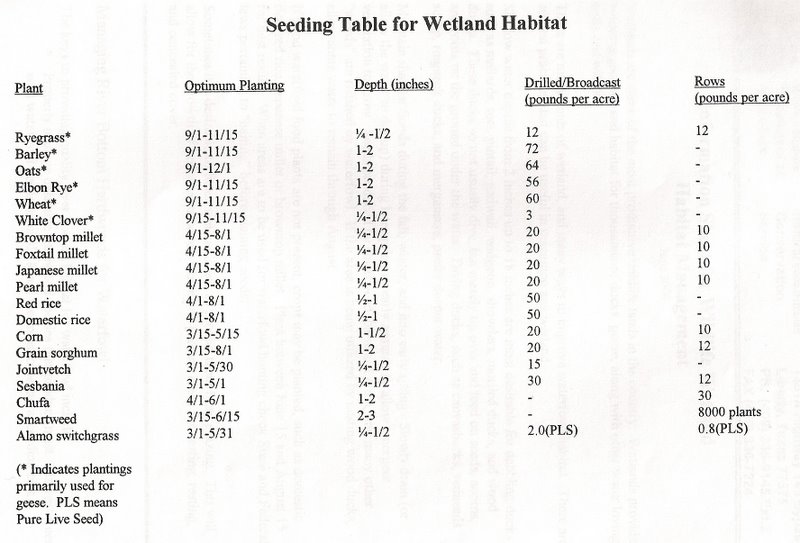Wetlands are some of the most productive wildife lands in the country, having very high plant and animal diversity. Wetlands provide breeding grounds and habitat for thousands of ducks, geese, and other water-loving bird and wildlife species. There are many kinds of wetlands and many habitat management techniques that can be used to improve waterfowl habitat.
Shallow water depths from 2 to 18 inches are most desirable fo dabbling ducks such as mallards, pintail, widgeon, mottled ducks, shovelers, gadwall, teal and wood ducks. Puddle ducks do not usually dive, but tip-up and feed on seeds, acorns, and roots on the ground under water. Diving ducks, such as canvasbacks, redheads, rigneck, and scaup prefer deeper waters over 36 inches in depth. For best results in your waterfowl management endeavor, make sure to familiarize yourself with the habits and habitat needed for the wildlife you wish to manage.
The best practice for waterfowl management is to maintain shallow flooded wetlands during the fall, winter, and into early spring. Then, slowly drain — or allow the water to dry up — during late spring or early summer to allow emergent vegetation to grow. Seeds produced by smartweed, barnyard grass, and many other “weeds” are relished by ducks, geese, and other waterfowl. If the area is being used by nesting wood ducks, make sure to allow some water to remain through late summer.
If good waterfowl food plants are not present, food plots can be planted into crops such as domestic rice, red rice, Japansese millet, or browntop millet. Plant seeds between June 15 and August 15 for best results for wintering waterfowl (see figure above for planting rates). When areas are to be used for waterfowl hunting check with state and federal laws pertaining to baiting before planting seeds.
Sometimes it is necessary to fence wetland areas to protect them from grazing. This wetland management practice will allow the growth of herbaceous cover, which will provide areas for nesting, resting, and concealed cover. Wetlands can be made better for ducks and geese by undertaking some simple waterfowl management practices that benefit both wetland plants, local wildlife, and migratory waterfowl.

In addition to making your water deeper for diving ducks, create several long strips from which these types of ducks can take off from the water. Puddle ducks can typically take to the air fast; whereas, divers require more room to take flight.